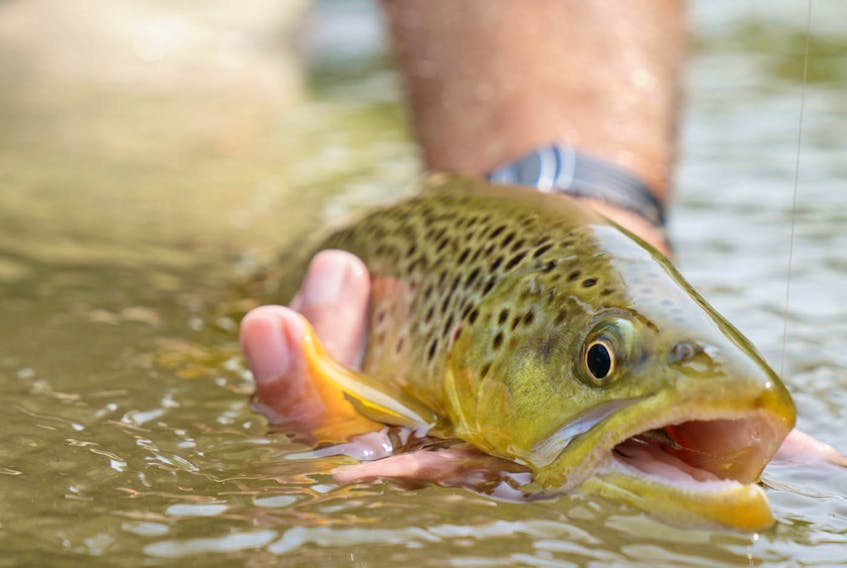NEW GLASGOW, N.S. — The end of August marks the end of retention season for brook or speckled trout in Nova Scotia. Beginning the first of September anglers must release brook trout they catch. The exception is in the Cape Breton Highlands Management Area where anglers can continue to keep brook trout. Anglers may also continue to retain brown trout and rainbow trout until the end of September, and even longer in some areas. Today more and more anglers are practicing catch and release angling. In some cases, Atlantic salmon for example, it is now required by law on all rivers, and for some species, such as striped bass, a slot limit means that you must release bass smaller, and larger, than the legal retention size limit. In many cases anglers are practicing it voluntarily to allow fish to survive for the future. There is no question catch and release plays a valuable role in sport fish management. When you consider that it can take up to five years to grow a nice brook trout it is important these large fish are preserved for the future.
Ensuring these valuable fish survive being caught, and then released, is our responsibility as anglers. If the trout, striped bass or salmon we release are to survive to spawn there are some simple steps we can follow to ensure survival:
-If possible don’t handle the fish. Fish have a protective layer of slime which is easily removed by dry hands or by being dragged up on the shore. Leave the fish in the water and remove the hook. Small pliers can aid in hook removal. If you must handle the fish, first wet your hand and gently cradle the fish as you remove the hook. Don’t squeeze the fish as it may damage the internal organs. A cotton glove makes it much easier to hang on to the tail of salmon or large trout. Just make sure it is wet before using it on a fish.
-Do not put your fingers in the gills. Any damage to the gills certainly reduces the chances of survival, and also avoid touching the eyes. They are easily damaged, especially if you use a net.
-Revive the fish before releasing it. Small trout are usually landed quickly and often don’t need to be revived but large trout, striped bass or salmon which have fought for some time must be allowed to recover. Remove the hook and gently hold the fish upright in a gentle flow of water. This will allow water movement over the gills and the fish will obtain oxygen. When the fish recovers it will remain upright in the water and swim away on its own.
- Use appropriate gear. Trout often take bait such as worms and minnows deep in their mouth. This increases the difficulty in removing the hook and lowers the chances of survival. Some management areas do not allow the use of natural bait for this reason, use flies or unbaited single hook lures. Trout caught on this type of gear can be released much easier. Anglers after striped bass need to use circle hooks when fishing with bait. All angling for Atlantic salmon is now restricted to single hook, barbless flies.
Using proper equipment, combined with the correct technique, anglers can enjoy their sport and also ensure the fish they release will survive for the future.
Don MacLean is an outdoor writer and biologist who lives in Pictou County.
©2019 Don MacLean









